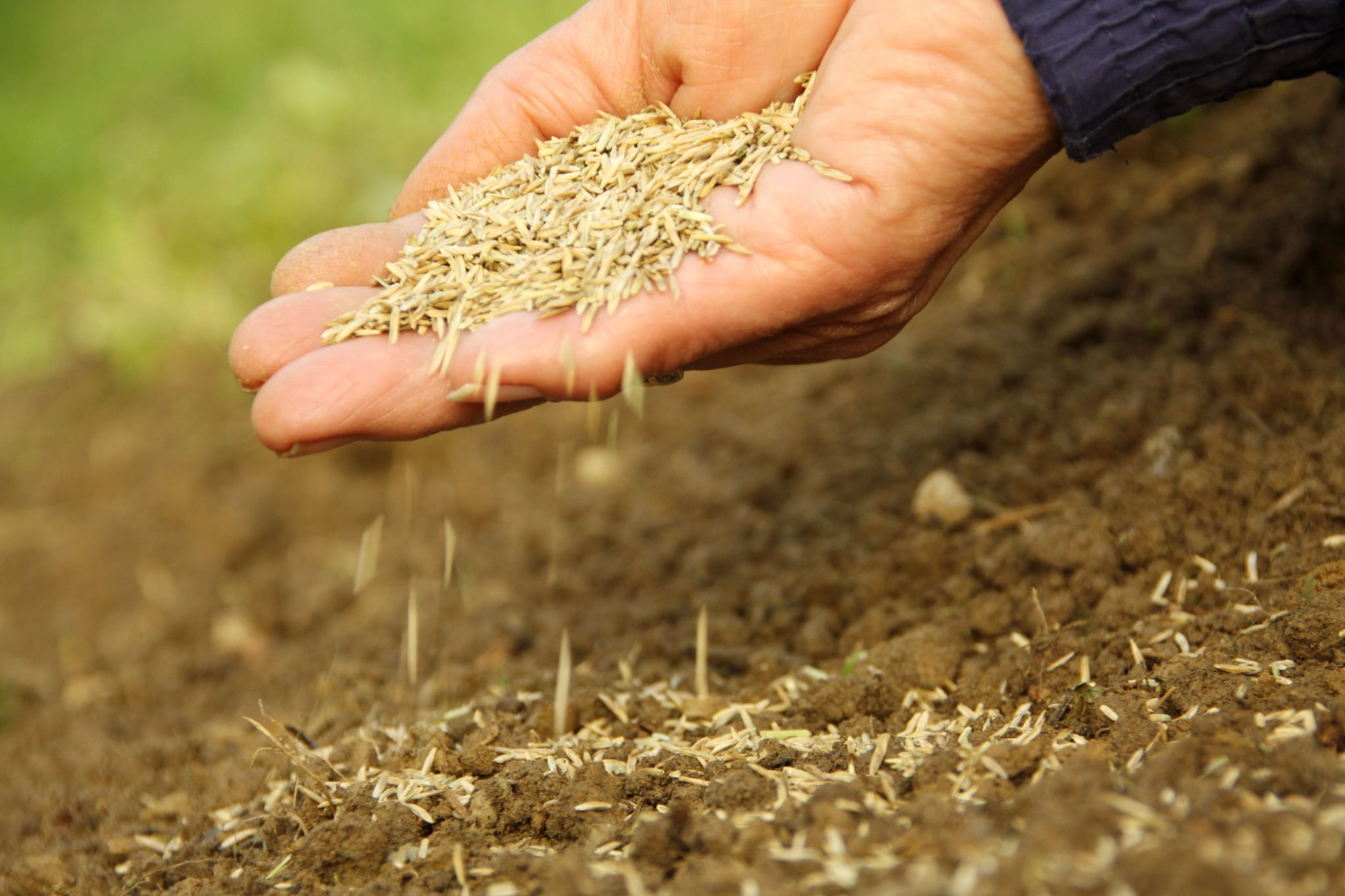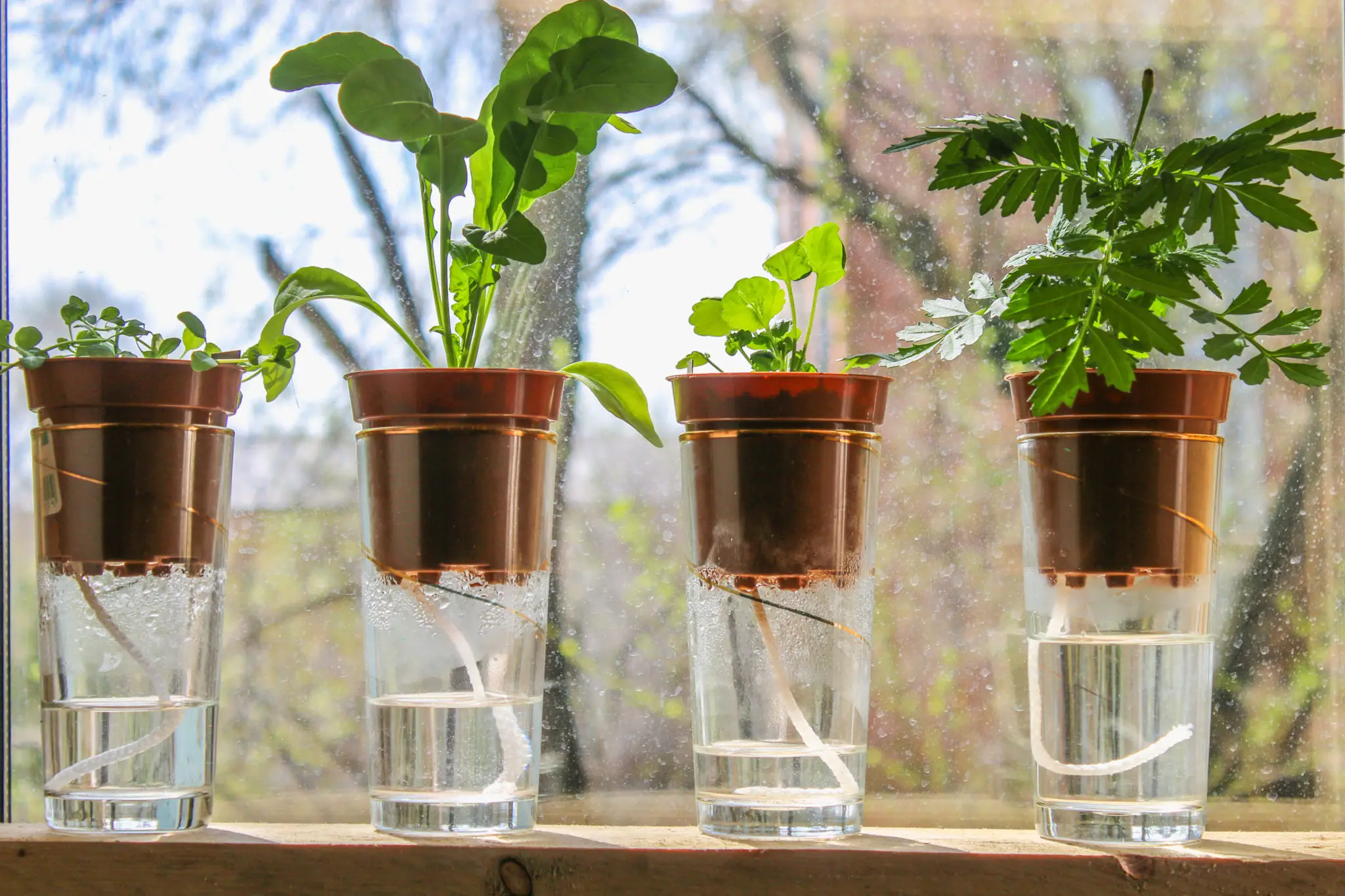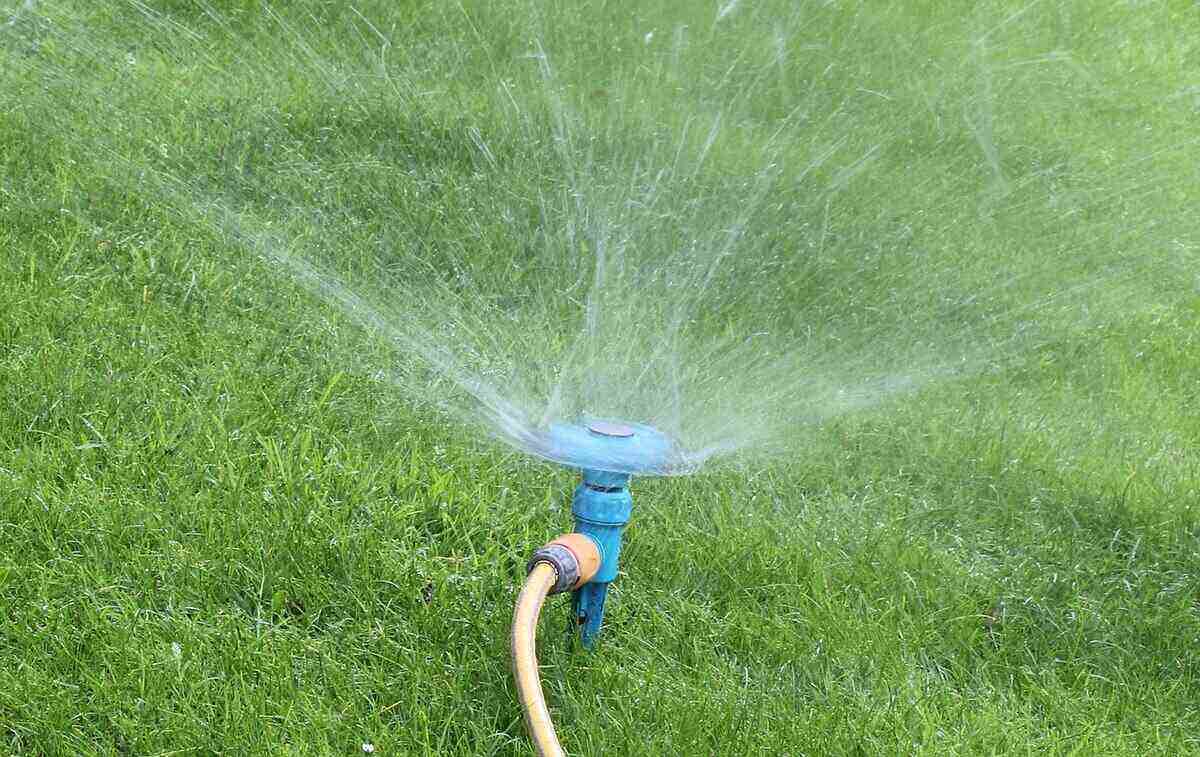Home>Gardening Basics>Tools and Equipment>How Do Irrigation Controllers Work


Tools and Equipment
How Do Irrigation Controllers Work
Modified: January 22, 2024
Discover how irrigation controllers work and the role of tools and equipment in optimizing water usage for your garden or farming needs.
(Many of the links in this article redirect to a specific reviewed product. Your purchase of these products through affiliate links helps to generate commission for Chicagolandgardening.com, at no extra cost. Learn more)
Table of Contents
Introduction
An irrigation controller, also known as a sprinkler controller or timer, is an essential tool used in the management of agricultural and residential watering systems. It plays a crucial role in automating the process of distributing water to plants, ensuring efficient irrigation practices and reducing water waste. By utilizing advanced technology and customizable programming options, irrigation controllers have revolutionized the way we manage and conserve water resources.
The primary function of an irrigation controller is to regulate the operation of sprinkler systems, controlling when and how long water is supplied to different areas of a garden, landscape, or field. It eliminates the need for manual watering, saving time and effort while also optimizing water usage.
Irrigation controllers are equipped with a range of features and capabilities that make them versatile and adaptable to various irrigation needs. These include the ability to program watering schedules, integrate with sensors for weather-based adjustments, control multiple watering zones, communicate with other devices, and operate on different power sources.
With the increasing concern for water conservation and environmental sustainability, modern irrigation controllers are designed to be highly efficient, precise, and user-friendly. They are equipped with advanced technology that ensures optimal irrigation practices, such as evapotranspiration-based irrigation scheduling and water-saving features like cycle and soak functionality.
In this article, we will explore the basic components of irrigation controllers, how they are programmed and scheduled, their integration with sensors, the concept of watering zones and valves, communication and connectivity options, power sources and backups, troubleshooting tips, and maintenance guidelines. Understanding the functionalities and features of irrigation controllers will help you make informed decisions when choosing the right controller for your specific irrigation needs and ensure the proper maintenance of your irrigation system.
Basic Components of Irrigation Controllers
Irrigation controllers are composed of various components that work together to regulate the watering process. Understanding these components is essential for effectively operating and maintaining an irrigation system.
1. Control Panel: The control panel is the main interface of an irrigation controller. It typically consists of a digital display, buttons, and a dial for programming and adjusting settings. The control panel allows users to input watering schedules, adjust watering durations, and access other controller functions.
2. Circuit Board: The circuit board is the brain of the irrigation controller. It contains the microprocessor that processes commands and controls the operation of the system. The circuit board also facilitates communication between different components of the controller.
3. Transformer: The transformer converts the incoming electrical power into the appropriate voltage required by the irrigation controller. It ensures the safe and efficient operation of the controller by providing the necessary power supply.
4. Solenoid Valves: Solenoid valves are responsible for controlling the flow of water to different zones of the irrigation system. Each valve is connected to a specific watering zone, and the controller operates the valves based on the programmed schedule. When the controller sends a signal, the solenoid valve opens, allowing water to flow through the corresponding zone.
5. Sensor Ports: Many irrigation controllers are equipped with sensor ports that allow for the integration of additional sensors. These sensors provide valuable data, such as soil moisture levels, rainfall, and temperature, which the controller can use to adjust watering schedules and optimize water usage.
6. Backup Battery: To ensure uninterrupted operation, irrigation controllers often include a backup battery. The backup battery powers the controller during power outages, preventing the loss of programmed settings and ensuring that watering schedules continue as planned.
7. Enclosure: The enclosure is the housing that protects the internal components of the irrigation controller from the elements. It is typically made of sturdy and weather-resistant materials to withstand outdoor conditions.
The combination of these components allows irrigation controllers to function efficiently and provide precise control over the watering process. Understanding how each component works will help you troubleshoot and maintain your irrigation system effectively.
Programming and Scheduling
One of the key features of irrigation controllers is the ability to program and schedule watering activities. This allows for precise control over when and how long water is delivered to specific areas of the landscape.
1. Manual Programming: Most irrigation controllers offer manual programming options, allowing users to input watering schedules directly on the control panel. This involves setting the days of the week, start times, and watering duration for each zone. Manual programming is straightforward and suitable for those who prefer a hands-on approach.
2. Automatic Programming: Advanced irrigation controllers come equipped with automatic programming features. These controllers use algorithms and built-in intelligence to calculate optimized watering schedules based on factors like soil type, plant water requirements, and weather conditions. Automatic programming takes the guesswork out of scheduling and ensures efficient water usage.
3. Multiple Programs: Many irrigation controllers allow for multiple programs, enabling different watering schedules for various parts of your landscape. For example, you may have different program settings for the lawn, flower beds, and vegetable garden. This flexibility allows for customization and efficient irrigation management for diverse plant types and watering needs.
4. Watering Durations: The duration of watering determines how long each zone receives water during a watering cycle. It is essential to consider factors such as soil type, plant water requirements, and climate when setting watering durations. Some controllers also offer the option to adjust watering durations dynamically based on sensor inputs, ensuring that plants receive the appropriate amount of water at any given time.
5. Seasonal Adjustments: Irrigation controllers with seasonal adjustment features allow for automatic modification of watering schedules based on the time of year. This capability accounts for changes in weather and plant water requirements during different seasons, optimizing irrigation efficiency and conserving water resources.
6. Watering Frequency: Watering frequency determines how often each zone is irrigated. It is important to consider factors such as soil moisture levels, plant types, and local watering restrictions when determining the appropriate watering frequency. Some controllers offer the ability to adjust watering frequency dynamically based on sensor inputs, ensuring efficient water usage.
By utilizing the programming and scheduling features of irrigation controllers, you can create tailored watering schedules that meet the unique needs of your landscape. Whether you prefer manual control or automated programming, these features provide convenience, efficiency, and optimized water usage in your irrigation system.
Sensor Integration
Sensor integration is a crucial aspect of modern irrigation controllers, allowing for more accurate and efficient irrigation practices. By incorporating various sensors into the system, controllers can gather real-time data on environmental conditions and adjust watering schedules accordingly. Here are some common types of sensors that can be integrated with irrigation controllers:
1. Soil Moisture Sensors: Soil moisture sensors measure the moisture content in the soil, providing valuable information about the water needs of plants. By integrating these sensors with irrigation controllers, the system can determine when the soil is dry and initiate watering only when necessary. This prevents overwatering and helps conserve water resources, as the controller can adjust watering schedules based on the actual moisture level in the soil.
2. Weather Sensors: Weather sensors monitor meteorological conditions such as temperature, humidity, wind speed, and rainfall. By integrating weather sensors with irrigation controllers, the system can make informed decisions about when to initiate or postpone watering. For example, if the weather sensor detects rainfall, the controller may delay irrigation to avoid unnecessary watering. This feature helps optimize water usage by adjusting watering schedules based on the actual weather conditions.
3. Rain Sensors: Rain sensors are specifically designed to detect rainfall and automatically interrupt irrigation cycles when sufficient rainfall occurs. These sensors help prevent overwatering during or after a rain event by temporarily disabling the irrigation system. Rain sensors can be integrated with the irrigation controller, allowing for seamless communication and coordination between the sensor and the watering schedule.
4. Evapotranspiration (ET) Sensors: Evapotranspiration sensors measure the rate at which water is lost from the soil through evaporation and plant transpiration. By monitoring the ET rate, the irrigation controller can estimate the water requirements of the plants and adjust the watering schedule accordingly. ET sensors provide accurate and real-time data, allowing for precise irrigation management and optimal water usage.
Integrating sensors with irrigation controllers enhances the efficiency of the irrigation system by ensuring that watering is based on actual environmental conditions and plant needs, rather than pre-determined schedules. By using sensor data to guide watering decisions, irrigation controllers can conserve water resources and promote healthier plant growth.
Watering Zones and Valves
Efficient irrigation requires dividing the landscape into distinct watering zones, each with its own set of valves. Watering zones allow for targeted watering and customization based on the specific watering needs of different areas. Here’s a closer look at watering zones and valves in an irrigation system:
1. Watering Zones: Watering zones are specific areas of the landscape that receive water from a designated set of sprinklers or drip irrigation emitters. Zones are typically determined based on factors such as plant types, sun exposure, soil type, and slope. By dividing the landscape into zones, you can tailor the watering schedule, duration, and frequency to meet the unique needs of each area.
2. Valves: Valves control the flow of water to each watering zone. They are connected to a specific zone and can be independently controlled by the irrigation controller. The valves open and close according to the programmed watering schedule, allowing water to flow or stopping it as needed. Each valve corresponds to a specific zone and ensures that water is distributed precisely where it is needed.
3. Types of Valves: There are two common types of valves used in irrigation systems: electric solenoid valves and hydraulic valves. Electric solenoid valves are the most widely used and are controlled by an electrical signal from the irrigation controller. Hydraulic valves, on the other hand, use water pressure to control the flow of water to each zone. Both types of valves perform the same function of controlling water flow, but the specific type used depends on the design and requirements of the irrigation system.
4. Valve Wiring: The valves are connected to the irrigation controller through a series of wires. Each valve has its own wire, which allows the controller to send signals to open or close the valve for the designated zone. The wiring should be properly installed, labeled, and organized to ensure easy maintenance and troubleshooting.
By dividing the landscape into watering zones and utilizing separate valves for each zone, irrigation controllers can offer precise control over the watering process. This targeted approach to irrigation ensures that water is distributed efficiently and based on the specific needs of each area, promoting healthy plant growth while conserving water.
Communication and Connectivity
In today’s digital age, irrigation controllers are equipped with advanced communication and connectivity features that enhance functionality and ease of use. These features allow for seamless integration with other devices and systems, enabling smarter irrigation management. Let’s explore the communication and connectivity options available in modern irrigation controllers:
1. Wireless Connectivity: Many irrigation controllers now come with built-in Wi-Fi or Bluetooth capabilities, allowing for wireless communication with smartphones, tablets, and other devices. This wireless connectivity enables convenient remote access and control of the irrigation system, providing flexibility and ease of use for users.
2. Mobile Applications: With the advent of mobile applications, irrigation controllers can be controlled and monitored through smartphones and tablets. Mobile apps provide a user-friendly interface for programming schedules, adjusting settings, and receiving real-time notifications about the irrigation system’s operation. Through mobile apps, users can manage their irrigation system from anywhere, anytime, making it convenient and efficient.
3. Internet Connectivity: Internet connectivity opens up a world of possibilities for irrigation controllers. Connected to the internet, these controllers can access real-time weather data, receive automatic updates, and even adjust watering schedules based on weather forecast information. Internet connectivity also facilitates integration with smart home systems, enabling seamless control and automation of the irrigation system alongside other smart devices.
4. Integration with Smart Home Systems: Many irrigation controllers are designed to integrate with popular smart home systems such as Google Home or Amazon Alexa. This integration enables voice-activated control and coordination with other smart devices in your home. For example, you can adjust irrigation schedules or check the status of your irrigation system using voice commands or through the smart home system’s interface.
5. Internet of Things (IoT) Integration: As part of the broader IoT ecosystem, irrigation controllers can communicate with other connected devices and sensors, creating a network of smart devices that work together. For example, an irrigation controller can receive data from soil moisture sensors or weather stations and adjust watering schedules accordingly. This intelligent communication allows for more efficient water management and improved sustainability.
These communication and connectivity features not only enhance the convenience and ease of use of an irrigation system but also contribute to improved water efficiency and smarter irrigation practices. By integrating your irrigation controller with wireless connectivity and smart home systems, you can enjoy complete control and automation, making the irrigation process seamless and efficient.
Power Source and Backup
A reliable power source is critical for the continuous operation of an irrigation controller. Power outages or disruptions can interrupt the watering schedule and compromise the effectiveness of the irrigation system. To ensure uninterrupted operation, irrigation controllers are designed to utilize various power sources and often incorporate backup options. Here are the key aspects of power source and backup in irrigation controllers:
1. Main Power Source: Most irrigation controllers are connected to the main electrical power supply. They are designed to operate on standard household voltage, usually 120V or 240V, depending on the region and specific model. The main power source ensures a consistent supply of electricity to power the irrigation controller and its components.
2. Transformer: The main power supplied to an irrigation controller is first converted by a transformer. The transformer adjusts the voltage level to the specific requirements of the irrigation controller, ensuring safe and optimal operation.
3. Backup Battery: To mitigate the risk of power outages, many irrigation controllers incorporate a backup battery system. The backup battery is typically rechargeable and serves as an emergency power source during power disruptions. It helps maintain the functionality of the controller, preserving the programmed settings and allowing the system to continue operating as intended, even during brief power outages.
4. Duration of Backup: The duration of backup power provided by the battery system varies depending on factors such as battery capacity, the power consumption of the irrigation controller, and the frequency and duration of watering cycles. Backup batteries can typically provide power for several hours or even days, ensuring that the irrigation system remains operational until the main power supply is restored.
5. Battery Health Monitoring: Some irrigation controllers include features that monitor the health and status of the backup battery. These features provide real-time information on battery charge levels and alert the user if the battery needs to be replaced or recharged. This proactive monitoring ensures that the backup power source is always ready for use and enhances the reliability of the irrigation system.
It’s important to note that backup batteries require proper maintenance. Periodic checks and replacements are necessary to ensure that the battery retains its capacity and reliability over time. Additionally, extreme temperatures can affect battery performance, so it’s recommended to protect the irrigation controller and battery system from excessive heat or cold.
Having a reliable power source and backup system in place ensures that the irrigation controller can function continuously, even in the event of power outages. By providing a consistent power supply to the controller, and with the backup battery ready to take over if needed, you can maintain the effectiveness and efficiency of your irrigation system without interruptions.
Troubleshooting and Maintenance
To ensure the proper functioning and longevity of an irrigation system, regular troubleshooting and maintenance are essential. Here are some key aspects of troubleshooting and maintenance for irrigation controllers:
1. Regular Inspections: Routine inspections of the irrigation controller are important to identify any visible issues or signs of wear and tear. Check for loose connections, damaged wires or cables, and any other physical damage that may affect the performance of the system.
2. Firmware and Software Updates: Stay up to date with the latest firmware and software updates for your irrigation controller. Manufacturers often release updates to improve performance, add new features, and address any known issues. Regularly check for updates and follow the instructions provided by the manufacturer to install them correctly.
3. Cleaning and Clearing: Keep the irrigation controller and its surrounding area clean and free of debris. Regularly inspect and clear away any vegetation, dirt, or other obstructions that can affect the proper functioning of the controller or hinder its accessibility.
4. Sensor Calibration: If you have integrated sensors with your irrigation controller, ensure that they are properly calibrated. Follow the manufacturer’s instructions to calibrate soil moisture sensors, weather sensors, or any other integrated sensors, to ensure accurate data collection and efficient watering adjustments.
5. Battery Maintenance: If your irrigation controller has a backup battery, perform regular checks to ensure its health and functionality. Monitor battery charge levels and replace or recharge the battery as necessary. Clean battery terminals and ensure proper connections to maximize the battery’s lifespan.
6. Valve Maintenance: Inspect and maintain the valves regularly to ensure they are functioning properly. Check for any leaks, damaged seals, or clogged valves that may affect water flow. Clean or replace faulty valves to avoid water wastage and ensure efficient operation.
7. System Testing: Periodically test the irrigation system to verify that all zones are receiving adequate water. Run each zone individually and observe the sprinklers or emitters to ensure proper operation. Adjust the watering duration or check for any blockages or malfunctions that may require further attention.
8. Troubleshooting Issues: If you encounter problems with your irrigation controller, consult the user manual or contact the manufacturer’s customer support for troubleshooting guidance. They can provide step-by-step instructions or troubleshooting tips to help resolve any issues you may encounter.
By following a regular maintenance schedule, conducting inspections, and addressing any issues promptly, you can maximize the lifespan and performance of your irrigation controller. Taking care of your irrigation system ensures that it remains efficient, reliable, and continues to provide optimal irrigation for your landscape.
Conclusion
Irrigation controllers have revolutionized the way we manage watering systems by automating the process and optimizing water usage. Understanding the basic components, programming and scheduling options, sensor integration, watering zones and valves, communication and connectivity features, power source, and troubleshooting and maintenance guidelines is vital for efficient operation and longevity of the irrigation system.
With the ability to program watering schedules, adjust durations, and integrate with sensors, irrigation controllers offer precise control over the irrigation process. By dividing the landscape into watering zones and utilizing separate valves for each zone, water can be distributed efficiently based on specific needs.
The communication and connectivity features of modern irrigation controllers make irrigation management smarter and more convenient. Wireless connectivity, mobile applications, internet integration, and smart home system compatibility allow users to control and monitor their irrigation systems remotely and automate watering based on real-time data.
A reliable power source, often with a backup battery, ensures uninterrupted operation even during power outages. Troubleshooting should include regular inspections, firmware updates, cleaning, sensor calibration, valve maintenance, and system testing. By following a maintenance schedule and addressing issues promptly, the effectiveness and lifespan of the irrigation controller can be maximized.
In conclusion, irrigation controllers have transformed the way we irrigate, offering precise control, water efficiency, and convenience. By understanding the functionalities and features of irrigation controllers and properly maintaining them, you can ensure optimal irrigation practices, conserve water resources, and promote healthier plant growth in your landscape.









